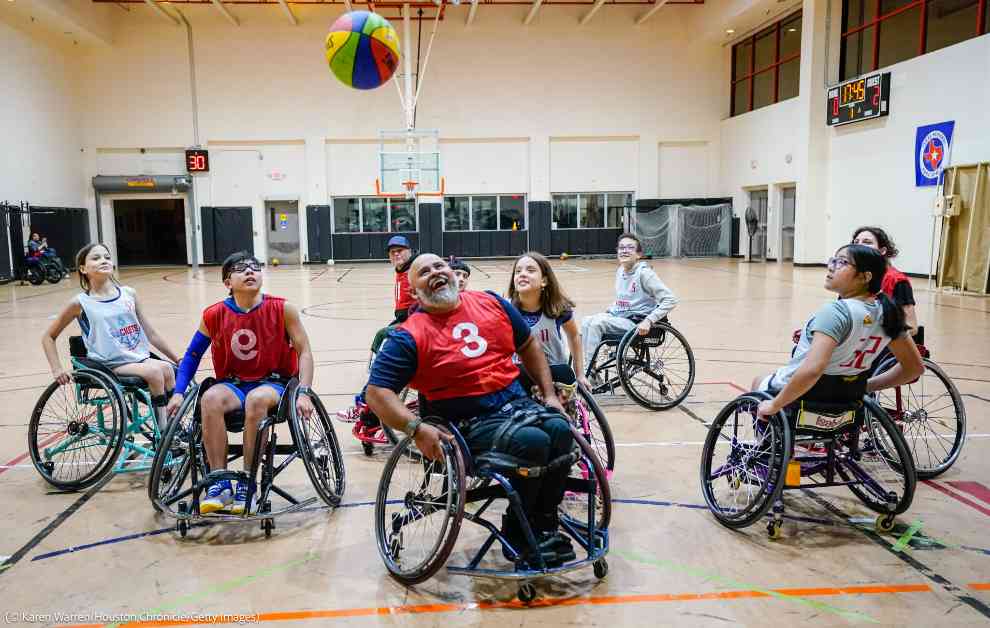Limitless: Exploring the World of Adaptive Sports for Athletes with Disabilities
In the realm of sports, the term “adaptive” or “adapted” takes on a whole new meaning. It signifies the innovative modifications of rules and equipment designed to enable individuals with disabilities to participate and compete in various athletic endeavors. This inclusive approach has opened up a world of opportunities for athletes like Seneida Biendarra, whose passion for outdoor activities was reignited through the adaptive sport of paraclimbing.
Biendarra’s journey into the world of adaptive sports began when she was faced with the daunting reality of losing her eyesight to a rare condition affecting her retina at the age of 17. Initially grappling with the fear that her disability would hinder her athletic pursuits, she found solace and empowerment in paraclimbing. This unique sport not only allowed her to continue her active lifestyle but also propelled her to new heights of achievement.
In a triumphant moment, Biendarra secured a silver medal at the International Federation of Sport Climbing’s inaugural Paraclimbing World Cup held in Salt Lake City. Her success serves as a testament to the resilience and determination displayed by athletes with disabilities who refuse to let obstacles stand in the way of their dreams. Speaking at the 2024 Paraclimbing National Championships in Gaithersburg, Maryland, Biendarra expressed, “It’s easier for me to scale a wall than it is for me to cross the street. Being in this community, it’s like a breath of relief.”
The landscape of adaptive sports in the United States has been significantly shaped by the Americans with Disabilities Act (ADA) of 1990, which paved the way for greater inclusivity and accessibility in athletic endeavors. With an estimated 43 million people living with disabilities in the country, the demand for adaptive sports programs has continued to grow, offering a diverse range of opportunities for individuals to engage in physical activities tailored to their needs.
From paraclimbing to Alpine “sit” skiing, sled hockey, adaptive cycling, and beyond, the array of adaptive sports available in the U.S. underscores the limitless possibilities for athletes with disabilities to thrive in competitive environments. Organizations such as Move United, the American Association of AdaptED Sports Programs, and the Challenged Athletes Foundation play pivotal roles in connecting individuals with disabilities to adaptive sports programs and facilities in their local communities.
Empowering Athletes through Adaptive Sports
Adaptive sports serve as a transformative platform for participants to enhance their physical and mental well-being, cultivate self-confidence, and develop invaluable leadership skills. According to the U.S. National Institutes of Health, engaging in adaptive sports can have profound benefits for individuals with disabilities, offering them a sense of empowerment and accomplishment as they navigate the challenges of their respective sports.
Jessica Long, a prominent figure in the world of adaptive sports, exemplifies the spirit of resilience and determination that defines many athletes with disabilities. Prior to competing at the 2024 U.S. Paralympic Swim Team Trials in Minneapolis, Long engaged in a heartfelt conversation with fellow swimmer Julia Gaffney, reflecting on the significance of adaptive sports in their lives. Their shared journey embodies the camaraderie and support that permeate the adaptive sports community, fostering a sense of unity and belonging among athletes with diverse abilities.
Popular Adaptive Sports in the United States
Among the most popular adaptive sports in the United States are wheelchair basketball, adaptive track and field, and adaptive swimming, each offering unique opportunities for individuals with disabilities to showcase their talents and skills. Wheelchair basketball, for instance, adheres to basic basketball rules while making necessary adjustments for dribbling and fouls to accommodate players with mobility impairments.
Adaptive track and field provides visually impaired sprinters with the opportunity to run alongside guides, enabling them to navigate the track with precision and speed. Similarly, amputees are equipped with specially designed prosthetic legs for running, ensuring that they can compete on an equal playing field with their peers. In adaptive swimming, competitors have the flexibility to choose their starting position based on their individual needs, whether standing, sitting, or already in the pool.
The diversity of adaptive sports not only showcases the talents and abilities of athletes with disabilities but also highlights the innovative strategies and technologies that have revolutionized the way these sports are practiced and celebrated. As individuals like Seneida Biendarra and Kyle Long continue to push the boundaries of what is possible in adaptive sports, they pave the way for a more inclusive and accessible future for athletes of all abilities.
In conclusion, the world of adaptive sports is a testament to the resilience, determination, and unwavering spirit of athletes with disabilities who refuse to be defined by their limitations. Through adaptive sports, individuals like Biendarra and Long have found a sense of purpose, community, and belonging that transcends physical barriers and empowers them to reach new heights of achievement. As the landscape of adaptive sports continues to evolve and expand, it is clear that the possibilities for athletes with disabilities are truly limitless.












